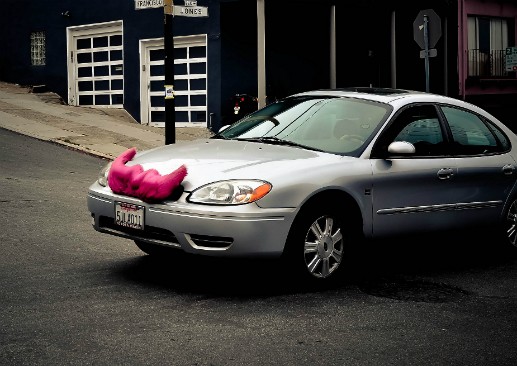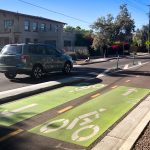In many cities, companies like Waymo and Uber have been testing driverless cars for years. In March, an autonomous vehicle operated by Uber struck and killed a pedestrian in Tempe, Arizona, bringing the technology more attention and some scrutiny.
Even after the Uber incident, however, there are still a wide range of story ideas for local reporters to cover the evolving technology of autonomous vehicles. This space isn’t only filled with Silicon Valley tech giants, as traditional automakers are actively working on autonomous vehicle systems.
This past year at the Consumer Electronics Show in Las Vegas, auto makers stopped showing off their technologies and shifted focus to talk around how they’ll make money from autonomous vehicles. This might be a clear sign that autonomous vehicles are closer than we think.
Safety and cybersecurity
You don’t have to have fully autonomous vehicles driving down your streets to already start thinking about ways to cover this emerging technology.
Tesla has semi-autonomous features in its vehicles, which opens up concerns about safety and what can be done to let drivers know that their cars aren’t fully autonomous at the moment. Then, there are cybersecurity concerns.
Could a hacker take control of an autonomous vehicle that is communicating with other cars on the road constantly? People have already hacked into a Jeep before to kill the engine, so what exactly could be done to a fully autonomous vehicle?
How will cities prepare?
There’s also the question as to how ready our cities’ streets are at the moment for self-driving cars. Streets may need to change in order to support autonomous vehicles in a variety of ways.
The painted lane lines on city streets may need to be refreshed so autonomous vehicles can easily navigate the streets. Traffic signs and other roadway items may need to be changed so they can connect and communicate with self-driving vehicles as well.
Find out how prepared your local community is for autonomous vehicles, or if anything is being done to prepare for this groundbreaking technology.
While cities may be thinking or actively adapting to these technologies, some private developers already are. Parking garages may become antiquated in the near future, which is why some developers are already thinking about ways to create modern parking garages so they can have an extended life. The entire concept might just be done away with, which could dramatically decrease the cost of development for construction companies.
Effects on the job market
There’s still skepticism as to when autonomous vehicles will be widely deployed, but they are already being used in a few different ways.
Utilizing autonomous vehicles for ride-sharing services are already being planned in places like Phoenix. These vehicles could also be used to deliver things like pizza, and autonomous semi-trucks have been deployed.
So, what would happen to the professional driver? It’s been reported that 5 million jobs could be lost due to autonomous vehicles. With companies like Uber operating in this space, just what will happen to the Uber drivers who have come to depend on it as their main source of income?
Semi-automation in everyday vehicles
While everyone thinks about these concerns, there still is a lot of question as to when autonomous vehicles will take shape. Some researchers have said that fully autonomous vehicles are still years away, but that doesn’t mean that cars won’t get smarter in the meantime.
Semi-autonomy could be implemented into everyday vehicles, and as this happens, it could be a great idea to compare traffic accidents and fatalities over the years.
Change from autonomous vehicles may take a long time, but it is coming. As more driverless cars enter more cities, and this technology becomes more available and sophisticated, help track this technology for your readers.










